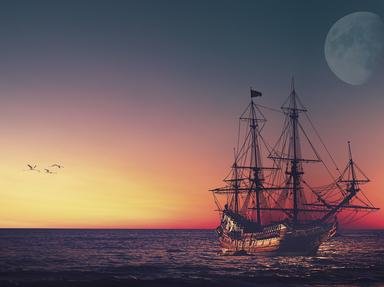Quiz Answer Key and Fun Facts
1. One of the earliest pieces of gold jewelry found in the Americas was a 4,000 year old gold necklace discovered by archaeologist Mark Aldenderfer in the Lake Titicaca basin. In what countries is Lake Titicaca located?
2. Deborah Carlson is a nautical archaeologist who studied Latin, which comes in handy as she studies the shipwrecks of what culture(s)?
3. Ocean explorer Robert Ballard has conducted more than 120 deep-sea expeditions, but his most famous find is this ship, which sank on April 15, 1912 after hitting an iceberg on her maiden voyage.
4. The oldest known readable text ever found in Europe was discovered by archaeologist Michael Cosmopoulos. Found in what is now an olive grove, it is a clay tablet of Linear B, which is the earliest form of which language?
5. In 2008, paleontologist Nizar Ibrahim found 95-million-year-old fossil relics of a new species of flying reptile. What are these types of ancient flying reptiles called?
6. Albert Yu-Min Lin uses noninvasive methods to search for the tomb of the first leader of the Mongol Empire. Who is he?
7. Beginning in 2011, the village of Huqoq started to be excavated by Jodi Magness, who is discovering decorative mosaics on the floor of an ancient synagogue. Some of these mosaics depict this Biblical character, known for his strength, his hair, and his poor choice of women. Who is he?
8. In 2007, Bolortsetseg Minjin founded the Institute for the Study of Mongolian Dinosaurs (ISMD) in this capital city of Mongolia. What city is it?
9. Anthropologist Johan Reinhard and Miguel Zárate discovered the frozen body of "Momia Juanita", the Incan Ice Maiden, on Mount Ampato in Peru. Mount Ampato is part of which mountain range?
10. The San Bartolo murals of Guatemala discovered by archaeologist William Saturno in 2001 depict many scenes of the Mayan maize god. What is the cereal grain maize called in English-speaking countries?
Source: Author
jcpetersen
This quiz was reviewed by FunTrivia editor
bloomsby before going online.
Any errors found in FunTrivia content are routinely corrected through our feedback system.

